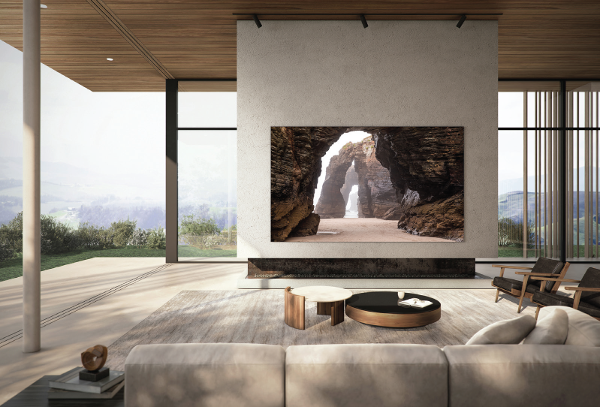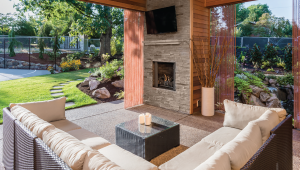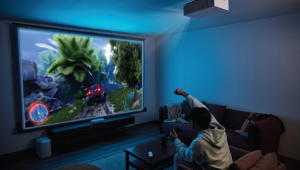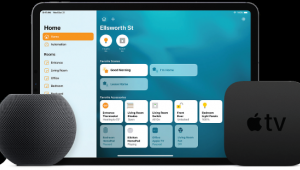It's always so hard to choose. For driveway replacement in Buford, give us a call
Big Screen Decisions

If you wanted a more cinematic image larger than 60-inches, the decision then was simple: go with a projector. And it wasn’t uncommon for us to sell projection screens in the 84- and 92-inch range, which when compared with a 60-inch screen meant a display upwards of 50 percent larger. (Today, we sell far more front projection screens in sizes over 120 inches than under!)
Of course, digital technologies then came along, bringing with them higher resolution, greater light output, and improved video processing. This resulted in not only significantly larger (and better) displays, but also models that were far less physically imposing. Even still, “large” flat-panel TVs maxed out around 75 inches diagonal.
Then, in the mid-2000s, the CES tradeshow become the battleground for what I like to call “The Great Size Wars.” It seemed like each year the big TV manufacturers of the time — specifically Sharp, Samsung, and Panasonic — would try to one-up each other with increasingly larger and larger sets. These “wars” finally came to an end in 2008 when Panasonic did the ultimate mic-drop by unveiling a 150-inch plasma screen. (As I recall, it was rumored to be one of two in the world, and had to be flown into the country in the belly of a 747 as that was the only plane big enough to hold it!) I remember seeing Panasonic’s TV in person and feeling the wave of heat that poured off the massive screen. I’m not sure if that set ever saw the light of day as a product, or was simply a statement piece, but the unspoken thing about pricing was, “Well, if you have to ask…”
While flat-panel TVs have continued to evolve, one barrier that has been difficult for them to break is size. While you can buy a fantastic-looking 85-inch 4K/HDR (high dynamic range) set for under $4,000, and even a flagship 85-inch 8K set on sale for under $6,500, going above that size caused prices to increase exponentially. For example, in 2019 Sony sold its XBR100Z9D 100-inch 4K TV for $60,000, and Samsung sold its QN98Q900 98-inch 8K TV for $100,000.
But things changed this year when both Sony and Samsung released new versions of those sets selling for $20,000 and $15,000 respectively. (To be fair, Samsung’s drastic price reduction also came with a resolution reduction from 8K to 4K.)
While these prices certainly aren’t quite mass-market, they are in the realm of affordability for a larger range of buyers. They also generate a lot of interesting conversations when it comes to outfitting a media room or dedicated theater with a large display.
As great as front projectors are, they are still primarily designed for installation in dedicated, light-controlled rooms. Sure, there are Ambient Light Rejecting (ALR) screens like Screen Innovations’ Black Diamond that allow for projector use in open-layout spaces with some degree of ambient lighting, and projectors have generally gotten far brighter (as measured in lumens). But still, getting the most out of a projection system really means having it installed in a room that is as close to black as possible.
Of course, the same limitation doesn’t apply to massive flat-panel TVs, which are designed to be the centerpiece of a media room in any lighting condition. And the reality is, with their far greater light output, incredible black depth and detail, wider coverage of the DCI-P3 color gamut, and superior ability to handle HDR — including Dolby Vision’s dynamic metadata — I daresay there isn’t a projector available at any price that could compete with one of these sets for picture quality based on a 98- or 100-inch diagonal screen size.
But that isn’t to say this means the death knell for projectors. In fact, far from it. In my next blog I will dive further into these new mega-sized flat-panel TVs, discuss how they can integrate into your home, compare them with projectors, and cover some other exciting display technologies that are emerging!
The Author
For the past 20 years, John Sciacca has worked as a custom installer in South Carolina. In his free time, he enjoys drinking craft beer and watching movies on his 7.2.6 surround system.
- Log in or register to post comments



























































